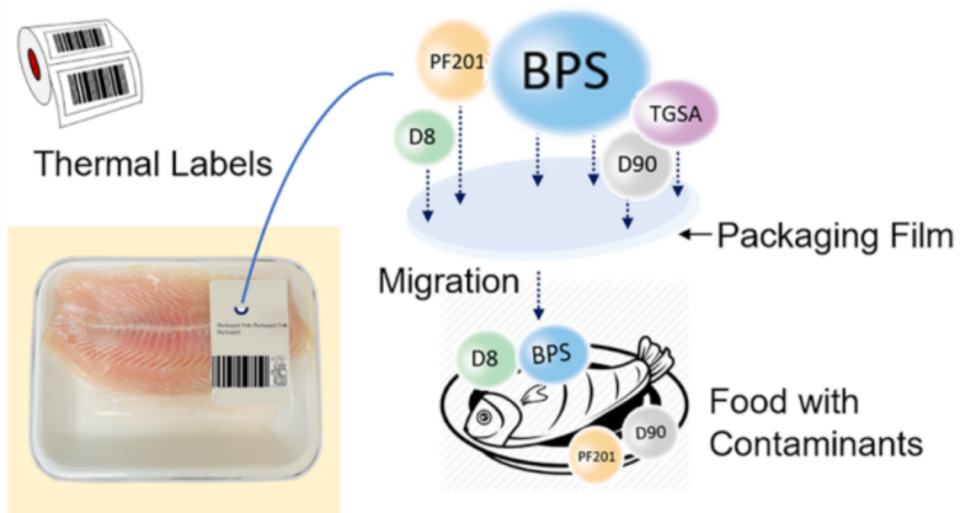Chemicals from food labels may seep into food. An issue of ‘global concern,’ study says
When grocery shoppers scan food packaging labels, what they see are prices and sell-by dates.
But what they don’t see are the harmful chemicals that may be seeping from the labels into the food, potentially causing long-term health effects for consumers, according to new research.
Thermal labels, which are pasted onto the wrapping encasing fresh food, contain the chemical compound bisphenol S (BPS), which may be leaching into fish, poultry, produce and other foods, according to a study published March 15 in the peer-reviewed journal Environmental Science & Technology.
“This is the first study identifying a major, widespread, source of BPS in human diet,” Stéphane Bayen, an associate professor at McGill University and coauthor of the study, told McClatchy News in an email. “This issue is of global concern as thermal labels are used widely on food packaging.”
BPS has largely replaced BPA in food packaging after the latter was demonstrated to cause health problems and subjected to regulation in the United States and Europe, according to a 2020 study published in the journal Nutrients.
But BPS, which may now be present in up to 81% of Americans, has been correlated with similar health effects, such as breast cancer, reproductive defects and nervous system issues, according to the study.
Chemical migrates from labels into food
One hundred forty samples were taken from six supermarkets in the United States and Canada between 2021 and 2022 for the study, and extractions were conducted to determine the levels of BPS in each, according to researchers.
Their research, which involved grinding materials into a powder and placing them into centrifuge tubes for analysis, revealed a “relatively high average content” of BPS was present in 73% of the thermal labels.
Researchers then sought to determine whether the chemical was seeping into food by running a controlled study of packaged fish from the U.S. and Canada. The American fish were sourced from stores in Hudson, Massachusetts, and Raleigh, North Carolina.
A group of fish in direct contact with thermal labels and a group in contact with the plastic wrapping were tested.
The initial portions of fish contained no BPS or only trace amounts of the chemical. But the fish touching the plastic had marginally higher levels and the the fish in direct contact with the labels contained significantly higher amounts of the chemical.

This indicated that BPS indeed migrated from the labels into food, researchers said, adding that other types of packaging, including trays and pads, didn’t appear to contain significant levels of the chemical.
The amount of BPS present in the materials varied significantly among the six stores, which were all different franchises, the researchers said. They did not name the stores.
While BPS is not subject to the same government oversight as BPA, agencies are currently examining the chemical’s effects.
The European Chemicals Agency announced it is looking into listing BPS as a “substance of very high concern” in 2022, researchers said.
A spokeswoman for the FDA told McClatchy News that “in general, the FDA does not comment on specific studies, but evaluates them as part of the body of evidence to further our understanding about a particular issue and assist in our mission to protect public health. The FDA is reviewing the findings of the paper.”
Evidence of uprising against Nazis is found in the ruins of Warsaw ghetto, experts say
4.0-magnitude quake, aftershocks, rattle Oklahoma. ‘Thought my fan was going to fall’
‘Serial rapist’ indicted in cold cases after lying on firearm form, Virginia cops say

